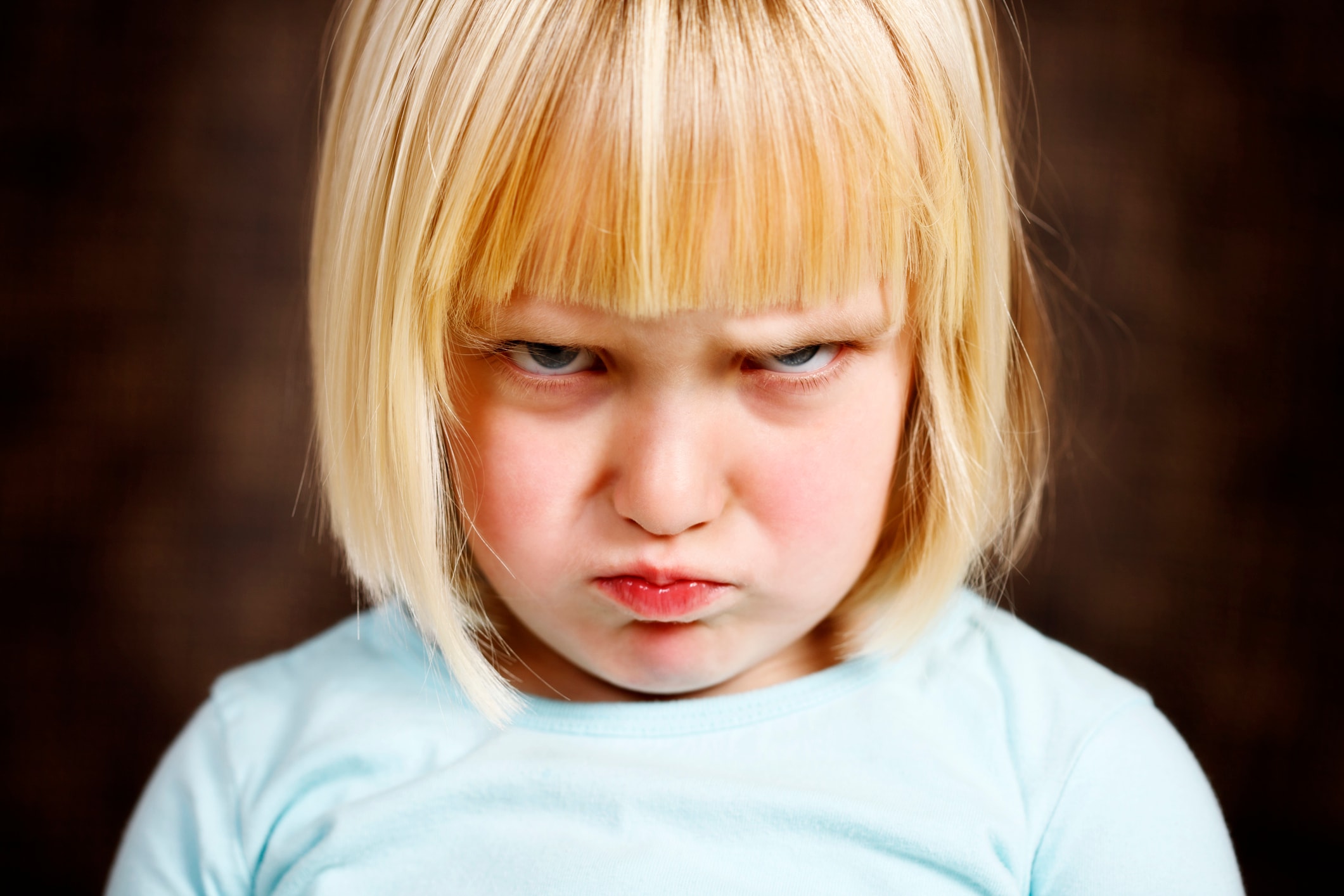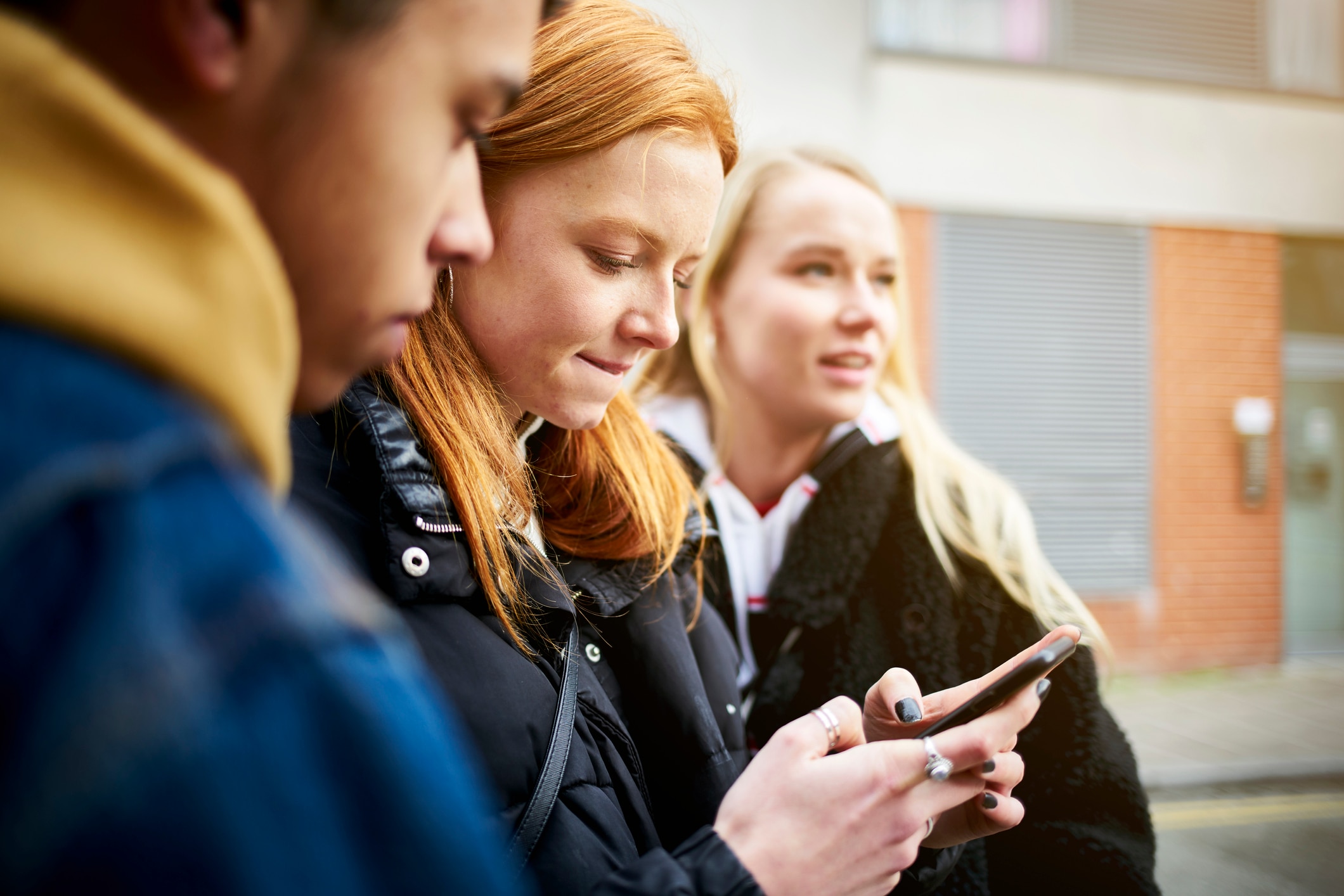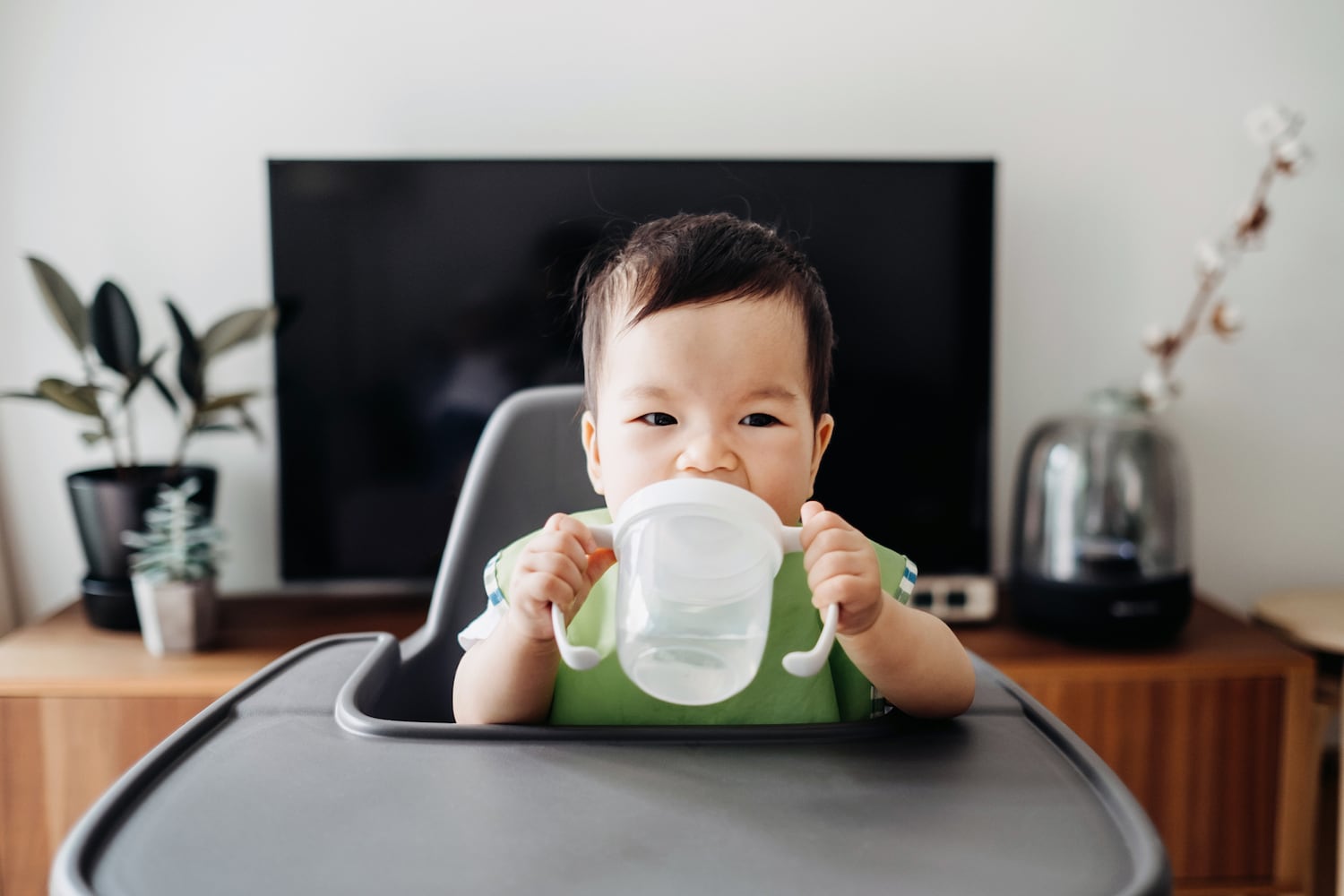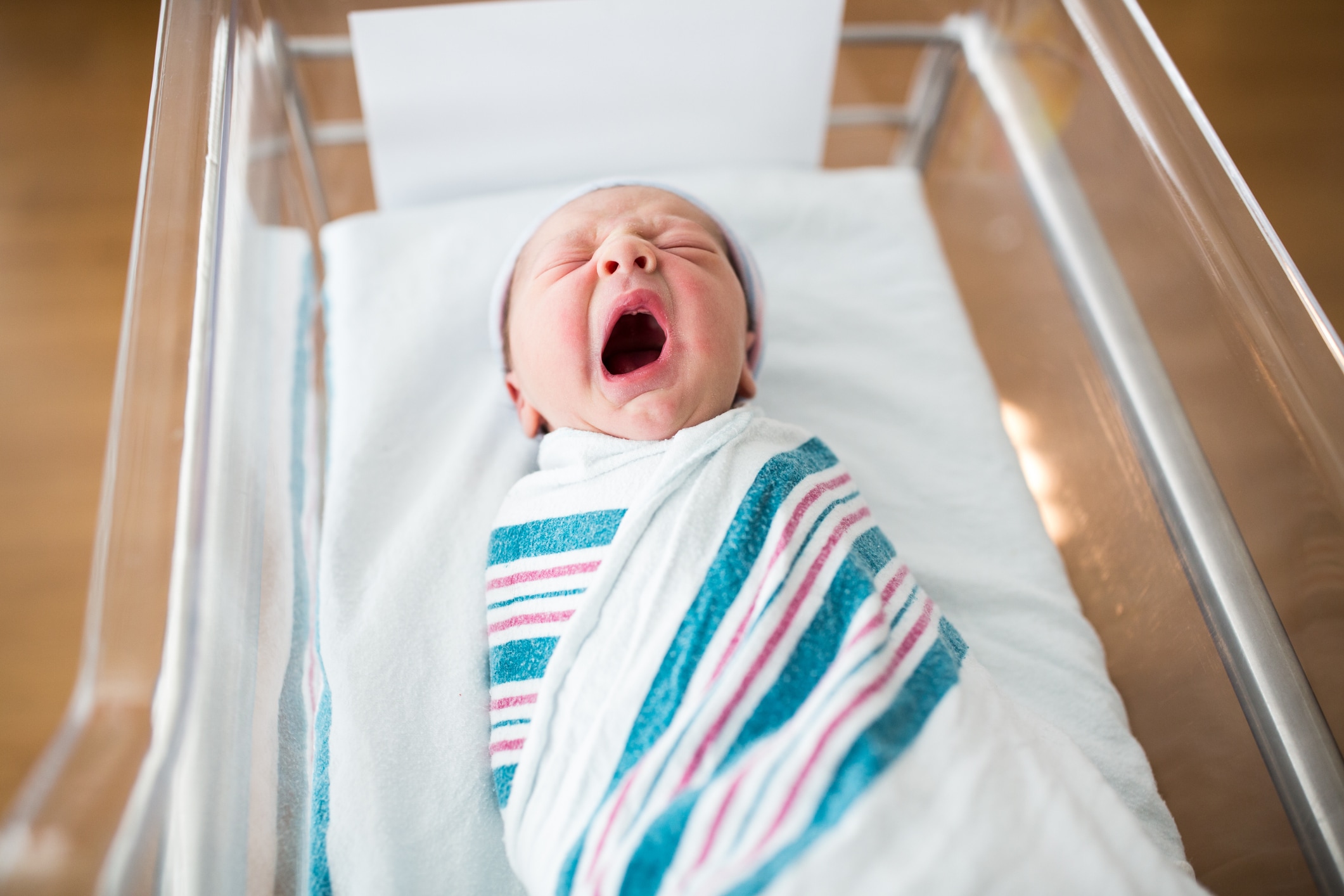White noise machines for babies seem to offer a miracle solution to tired parents — who just really need everyone in the family to go to sleep already — but are they really safe? Despite their wild popularity and the sign-off on their safety from top baby sleep experts, more and more researchers are raising red flags about the potentially harmful effects of noise that is too loud and too close.
“One out of five young adults, [ages] 20 to 29, has evidence of noise induced hearing loss, and we think that some of that starts in childhood,” says Dr. Sophie J. Balk, a pediatrician at Children’s Hospital at Montefiore and professor of pediatrics at Albert Einstein College of Medicine who researches the effects of environmental factors like noise pollution on children’s health. “So, we need to start protecting our hearing early.”
Here, Balk and other experts weigh in on the potential risks of white noise for babies and how to use these machines and apps safely.
What is white noise, anyway?
White noise is basically a sound that contains all the different frequencies we can hear, played at the same intensity. Imagine the static you hear on an untuned radio or the gentle hiss of a fan — that’s white noise.
“White noise machines combine all noise frequencies to create a steady background hum that masks distractions,” explains the National Sleep Foundation. When it comes to sleep, the main benefit of white noise is that it masks other, potentially disruptive noises.
“If you have a steady state of noise, you don’t necessarily notice the bird chirping outside the window or other sounds,” says Dr. Isaac Erbele, an otolaryngologist — also known as an ear, nose and throat doctor (ENT) — who specializes in ear and skull surgeries at Brooke Army Medical Center in San Antonio. Sounds that could otherwise disturb you (like a car honking in the street outside or someone making a midnight snack in the kitchen) become “a little bit less distracting when you have that competing noise,” he adds.
Is white noise safe for babies?
In a nutshell: It’s complicated.
White noise machines have become as commonplace as diapers and wipes on baby registries and shower gift lists, and a quick scroll through the most popular versions sold online reveals tens of thousands of reviews from parents happy with their bedtime (and naptime) helpers. But are there any red flags?
What do the experts say?
The American Academy of Pediatrics (AAP) offers no official stance on their use, but notes in their noise guidance resource page for parents, “White noise machines sometimes are used to drown out environmental noise. Some machines can produce hazardous noise levels. If you use a sleep machine, place it as far away from the baby’s head as possible and use it for a short time only.”
This advice is repeated in a 2023 AAP report on the dangers of excessive noise exposure for babies, children and adolescents, but the organization stops short of prescribing decibel (dB) level recommendations for infant white noise machines.
What does the research say about white noise machines and babies?
A new review, published just this June in the journal Sleep Medicine, backs up the concerns raised and points to the need for more caution — and perhaps more regulation — around the use of sleep machines for newborns and older babies. Researchers analyzed the current data on the sound levels of white noise machines. All told, the review included 20 studies, seven of which evaluated animal models and 13 of which examined pediatric subjects, with a total of 83 animal and 9,428 human subjects.
The results? Numerous devices sold as baby sleep machines can generate noise levels exceeding even the recommended limits for adult workers. Of the 24 white noise machines and six phone apps included in the research, all reached levels that were higher than the 85 dB maximum permissible for an eight-hour shift by the National Institute of Occupational Safety (NIOSH).
Erbele is one of the study’s authors. He was motivated to perform this research by two of his trainees, one of whom was a new dad with questions; another reported going to a friend’s house where a white noise machine in the baby’s room was so loud, they could hear it from the dining room. “It was pretty clear that there are some upper limits that haven’t been explored that need to be explored,” Erbele says.
The review points out that these machines are not federally regulated, and the labeling of decibel levels can be unclear.
That said, Erbele feels that white noise machines have a place in helping babies (and their parents) get sleep. But, he cautions, as his team’s research demonstrates, “they have the opportunity to be a little bit too loud,” and that’s something, he stresses, parents should be aware of.
How does white noise help babies sleep?
A growing body of evidence shows that white noise can indeed help babies both get to sleep and stay asleep longer. A 2024 meta-analysis published in Nursing Open revealed some intriguing findings about the impact of white noise on preterm infants. Researchers concluded that white noise significantly influenced several important factors, including pain levels, weight gain, heart rate, respiratory rate and how much oxygen the infants were getting. The researchers think they know why it works: Basically, white noise is like a comfy sound blanket that blocks out all the jarring, irregular noises in the hospital.
Additionally, another study published this year found that premature infants who received white noise therapy experienced an increase in sleep duration by about two hours. This is particularly beneficial, as adequate sleep is crucial for the growth and development of these vulnerable infants.
“White noise is a reasonable choice to help parents and kids get the sleep that they need, but that we need to be thoughtful about how it’s applied and make sure that it’s not too loud to prevent harm for children and infants.”
— Dr. Isaac Erbele, an otolaryngologist
Cons of white noise for babies
As helpful as white noise can be for your baby’s sleep, it can also be harmful to their developing ears. Before you make the decision to use a white noise machine, or think about how to set limits on how long you let it run, it’s important to understand the potential risks.
White noise machines are often too loud for adults, let alone infants
As Erbele’s research shows, white noise machines marketed for infants can reach upwards of 85 dB, with white noise-generating apps often being the worst culprits. “Apps are potentially the most dangerous as these are governed by the maximum output of the cellular phone hardware, which can reach levels around 100 dB,” reports the study.
His team recommends that parents keep their sleep machines no louder than “mid” range, or 40 dB to around 60 dB, with 82 dB as the absolute maximum. (Remember, 85 dB is the limit that NIOSH permits for adults who are working up to eight-hour shifts.) Erbele recommends the free NIOSH “Sound Level Meter” app as an easy way to test how loud your white noise machine is.
The “safe” mid-range decibel levels haven’t been well researched
Further, Erbele notes that while upper limits relating to permanent hearing loss have been studied in adults, more research is needed to understand the effects of hearing and brain development in the middle (between 60dB and 80dB) range.
“In a few animal and human studies, we found white noise could delay brain development in levels between 60 and 80 decibels,” says Erbele. “Part of what we’re trying to determine is where exactly those limits are within that medium level. There may be some development issues that haven’t necessarily been explored. In most situations, we recommend keeping the level below 60 decibels.”
Mahindra Ramdhanie, a doctor of audiology and a senior audiologist at Montefiore Medical Center in the Bronx, who co-authored the 2023 AAP noise exposure report, agrees that there is a concerning research gap here. “If you’re using a white noise machine every single night for several hours, there’s no research that says what’s harmful and what’s not, and what’s beneficial and what’s not.…There’s no research that says what exactly is the best level for exposure for an infant.”
“If you’re using a white noise machine every single night for several hours, there’s no research that says what’s harmful and what’s not, and what’s beneficial and what’s not. There’s no research that says what exactly is the best level for exposure for an infant.”
— Mahindra Ramdhanie, a doctor of audiology and a senior audiologist at Montefiore Medical Center in the Bronx
Hearing impairment is cumulative over a lifetime
“One of the things about noise hazard is that it takes a long time to actually take effect,” warns Erbele.
The fact that these hazards start from birth is something that Balk (another co-author of the AAP report along with Erbele) wants to stress to parents. “We need to pay more attention to hearing in general as a society, and the effects of noise on hearing,” she says. ”It’s been an underappreciated public health matter. Noise exposure can start in infancy, and with noise that’s loud enough, it can permanently damage your hearing.”
In their report, the AAP notes that about one in six middle and high school students have evidence of hearing loss. This is not to say that all of this hearing loss, of course, is related to noise exposure, says Ramdhanie.
“There are different types of hearing loss,” he explains, giving congenital issues that may have been missed in earlier screenings, or loss caused by infections or fluid, as examples. “So it’s not to, necessarily, say that all this loss is directly due to just noise exposure by itself, but [that stat] shows that it needs to be addressed and monitored by parents.”
How to safely use a white noise machine for your baby
“Given that some of these machines can reach these levels that are toxic to adults, we really need to be especially careful with our babies,” cautions Balk. That said, follow these tips to use white noise safely.
Keep the volume as low as possible
While his recommended “hard stop” is 82 dB, Erbele reiterates that below 60 dB is still “pretty loud” in terms of being able to do the work of helping babies sleep without being a risk for harming little ears..
Keep white noise machines as far away from your baby’s head (and ears) as possible
Balk agrees with the AAP’s recommendations to keep white noise machines across the room from your baby.
“Place them as far away from the infant as possible — certainly not near the baby’s head,” she says, noting that many parents secure white noise machines to crib rails or buy smart bassinets where white noise is built in. “Some of them, you can’t turn off the sound without turning off the whole bassinet.”
“The way noise damages hearing is based on the intensity and time. Keeping it below 60dB for the duration of the night should be reasonable.”
— Dr. Isaac Erbele
Consider limiting the length of time you use white noise machines
“The way noise damages hearing is based on the intensity and time,” says Erbele, who is not too concerned with keeping white noise machines on all night. “Keeping it below 60dB for the duration of the night should be reasonable.”
It’s when you have a higher decibel level and an extended period of time that he’s concerned. “If you are keeping it up at high levels, and doing that for a long period of time, that can be damaging,” he notes.
For her part, Balk urges more caution, stressing that a big difference between adults and babies is how much time we spend asleep. “Adults sleep seven, eight hours a night. A really small infant spends most of their time sleeping.” If babies are sleeping with noise machines on the entire time they’re snoozing, even if they wake up often and go back to sleep, it’s cumulatively for much longer time periods every day than adults would.
“Their anatomy is different,” she adds. “Smaller ears amplify sounds in a different way. As pediatric clinicians, we’re especially concerned because babies are so rapidly growing and developing, including their auditory systems. Often, body systems that are rapidly growing and developing are more sensitive to environmental hazards such as noise. Young babies can’t protect themselves. They rely on parents to remove them from hazardous situations. And little ears are different than big ears.”
So, what does this mean for parents? It’s all about finding a balance. Being attentive to your little one’s needs and adjusting the noise levels accordingly can help create a safe and soothing sleep environment.
The bottom line on white noise for babies
Based on all of the research and advice from the experts we spoke to, a safe bet is for parents to experiment with finding the lowest volume levels and the shortest duration of time for white noise machines.
Along with the AAP, Erbele and his team don’t feel the need to issue a blanket recommendation that parents ditch their white noise machines — in fact just the opposite.
“[Sleep is] important for brain development,” says Erbele, says it’s fine for parents to use white noise machines to help everyone in the family get sleep, even babies, as long as the noise limit is safe. Indeed, sleep is incredibly important for babies, playing a vital role in brain development, physical growth, immune system function and even their memory function.
The AAP explicitly recommends “turning on a calming sound” (like a white noise device, the humming sound of a fan or the recording of a heartbeat) in their guide for calming fussy babies.
“White noise is a reasonable choice to help parents and kids get the sleep that they need, but that we need to be thoughtful about how it’s applied and make sure that it’s not too loud to prevent harm for children and infants,” says Erbele.
Ultimately, all three experts we spoke to hope to not only raise awareness for parents, caregivers, and pediatricians and other healthcare providers, but to encourage eventual guidance and perhaps legislation.
“We hope to start more conversations and get more people involved; get legislators and teachers and parents and providers all talking about this to come up with a solution, or a way just to monitor these things and make it a little bit more on the forefront of everyone’s mind,” says Ramdhanie.
He continues: “When your baby’s born and you get the checkmark of normal hearing, you kind of just forget about it until there’s screening when they’re 4 or 5 years old.” But throughout those first five years, there’s a lot of noise exposure. “As babies are maturing and growing, there is some possibility of overexposure that parents just need to be aware of — not to necessarily be afraid of, but just to monitor the same way they would monitor other exposures.”





